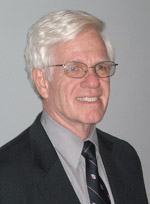Citizens as Sentient Creatures
 |
The exceptional power of “crowdsourcing,” plus the sharable imagery and geospatial information system tools demonstrated in
A wide range of capabilities can be integrated into an “information platform” to enhance national disaster preparedness and response capability. One way to gather ideas quickly would be to formulate a grand challenge along the lines that the Defense Advanced Research Projects Agency and others have done—high level, pushing the outside of the envelope.
As it turns out, official guidance supports such a challenge. One of the key concepts in the Department of Homeland Security’s recent Quadrennial Homeland Security Review (QHSR) 2010—a counterpart to the Defense Department’s Quadrennial Defense Review (QDR)—is “Resilience: Foster individual, community, and system robustness, adaptability, and capacity for rapid recovery.” Within this is an objective of providing “timely and accurate information to the public.” In particular, it says, “Establish and strengthen pathways for clear, reliable, and current emergency information, including effective use of new media. Timely, appropriate, and reliable communication with the public before, during, and immediately after disasters is a key component of societal resilience.”
A grand challenge focused on an information platform can thus contribute to the QHSR 2010’s goals and strategic outcomes. Possible challenge language could be to “Develop an information platform to provide timely and accurate information to the American public before, during and immediately after natural or manmade disasters, including the effective use of distributed knowledge sharing.”
Measuring the platform’s impact will be critical. FEMA uses 15 national planning scenarios ranging from natural disasters to terrorism with weapons of mass destruction. Because the potential conditions of disruption vary so widely, knowledgeable professionals have suggested bounding the problem by postulating three levels of damage to the telecommunications and electric utility infrastructures: local, regional and large scale. A local disaster would cover at least 10,000 square miles and contain one metropolitan area with two million people in urban settings. A regional disaster would be multistate, similar to Hurricane Katrina and/or possibly cross-border—such as the Cascade region comprising
The responses to this grand challenge should be able to scale across these levels. Details of the levels themselves can be refined further.
This challenge needs to address at least three areas: new technologies; resilience, restoration and recovery; and citizen focus. Technology alone will not be enough. Preparations should be made ahead of time in the physical, cyber and human domains to enhance readiness for disasters and to minimize degradation of service during the events. For citizen focus, policies and procedures must maximize citizen empowerment and encourage people to take advantage of the platform’s capabilities. Some laws and regulations also may need to be changed.
In addition to crafting the challenge language, several related questions emerge: What specific goals and metrics should be set? What current public and private sector activities could the country build on to achieve this challenge? What are the most important scientific, technical and research and development (R&D) challenges? What are the appropriate roles of government, industry, academia and other stakeholders, and what new forms of collaboration should be explored? In addition to investment in R&D, what other policies should the government consider to achieve this challenge and realize its broader economic and societal benefits?
Much of the work on the grand challenge thus far has been done via a wiki: http://platformchallenge.pbworks.com. Comments to date have helped shape the focus from post-disaster restoration to much broader resilience. This is an opportunity for AFCEANs and other interested parties to make tangible contributions to disaster preparedness. Enthusiastic engagement is welcome.
Linton Wells II is the director of the Center for Technology and National Security Policy (CTNSP) in the Institute for National Security Studies and a distinguished research professor at the




Comments